Leiko Ikemura was born in Tsu, Mie Prefecture, Japan. Her artistic journey spans continents, mediums, and cultural influences, resulting in a body of work that transcends boundaries and defies categorization. Currently residing and working between Berlin and Cologne, Germany, Ikemura’s artistic practice encompasses painting, drawing, sculpture, and photography, reflecting her multifaceted exploration of the human experience.
After leaving Japan in 1972, Ikemura embarked on a journey across Europe, living in Spain, Switzerland, and Germany. This cross-cultural odyssey deeply influenced her artistic vision, as she absorbed the diverse landscapes, traditions, and philosophies of each country. It was during this time that Ikemura honed her craft, developing a distinctive style marked by its enigmatic allure and expressive depth.
Central to Ikemura’s oeuvre are recurring motifs of mystical landscapes, obscure portraits, and ambiguous figures. Her works evoke a sense of mystery and introspection, inviting viewers into a world where reality merges with imagination. Drawing inspiration from Japanese mythology and European culture, Ikemura navigates the liminal spaces between abstraction and figuration, creating compositions that blur the boundaries between the human, the animal, and the natural world.
Throughout her career, Ikemura has tackled profound themes such as gender, war, and religion with nuance and sensitivity. Her artistic language is a testament to her ability to engage with complex subjects, offering viewers a glimpse into the depths of the human psyche and the intricacies of existence.
Ikemura’s artistry has garnered international acclaim, with her works featured in prestigious collections and institutions worldwide. From the Centre Pompidou in Paris to the Museum of East Asian Art in Cologne, her creations resonate with audiences across cultures and continents, transcending linguistic barriers to convey universal truths.
As a Japanese-Swiss artist, Ikemura embodies the spirit of cultural exchange and artistic innovation. Her commitment to pushing the boundaries of her chosen mediums and exploring the intersections of East and West has cemented her legacy as one of the most important painters of her generation.
Leiko Ikemura’s art invites us to contemplate the mysteries of existence, to embrace the unknown, and to embark on a journey of self-discovery. Through her transcultural lens, she reminds us of the interconnectedness of all things and the enduring power of artistic expression to transcend boundaries and unite humanity in shared experiences.
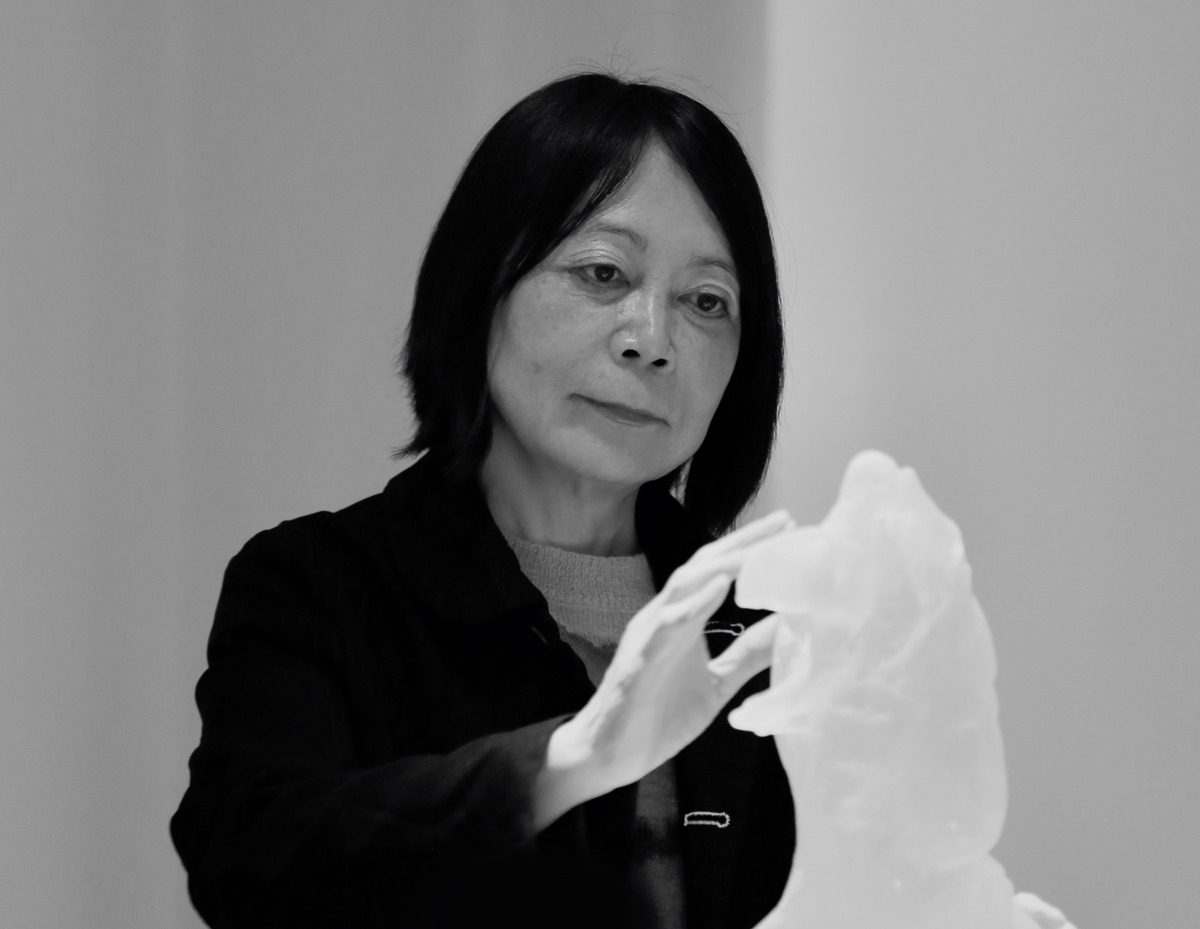
An Interview with Leiko Ikemura
By Carol Real
How has your identity as a Japanese-Swiss artist influenced the themes and concepts in your art? How has your cultural background shaped your art?
Initially, my identity wasn’t a focal point for my work. I viewed identities as potentially illusory or even clichés. In fact, in my earlier artistic phases, I actively worked against this notion, necessitating my emigration. It was only after years of self-exploration that I embraced the idea of origin in a newfound dimension.
My cultural background, particularly my Japanese heritage, has subconsciously influenced me, having spent my formative years in Japan. While living abroad, I gained a deeper awareness of this heritage, influencing not just my art but also my worldview and behavior.
Additionally, Spain and Switzerland, my second and third home countries, have been significant inspirations. They’ve enriched my artistic endeavors, contributing to the diverse tapestry of influences in my work.
Could you please describe your evolution as an artist, from your early years in Japan to your current work in Germany?
This story is quite extensive. My fascination with perceiving the world sensitively and learning from other cultures has been a central theme. Particularly, I have focused on creating my own artistic realm, aiming to foster a profound understanding of humanity’s relationship with nature, history, and philosophy.
Neo-Expressionism played a significant role in your career. How did this movement influence your artistic style?
When I began my career in Switzerland and Germany, there was a significant movement among the younger generation in Europe. Mainly male painters were actively expressing their inner artistic vision instead of following formalist Conceptualism and Minimalism.
So, this was my initial position as an artist, consciously surrounded by that lively atmosphere in Zurich, Cologne, and Berlin. My interest in narrative and emotionality responded to the early 1908s art scene.
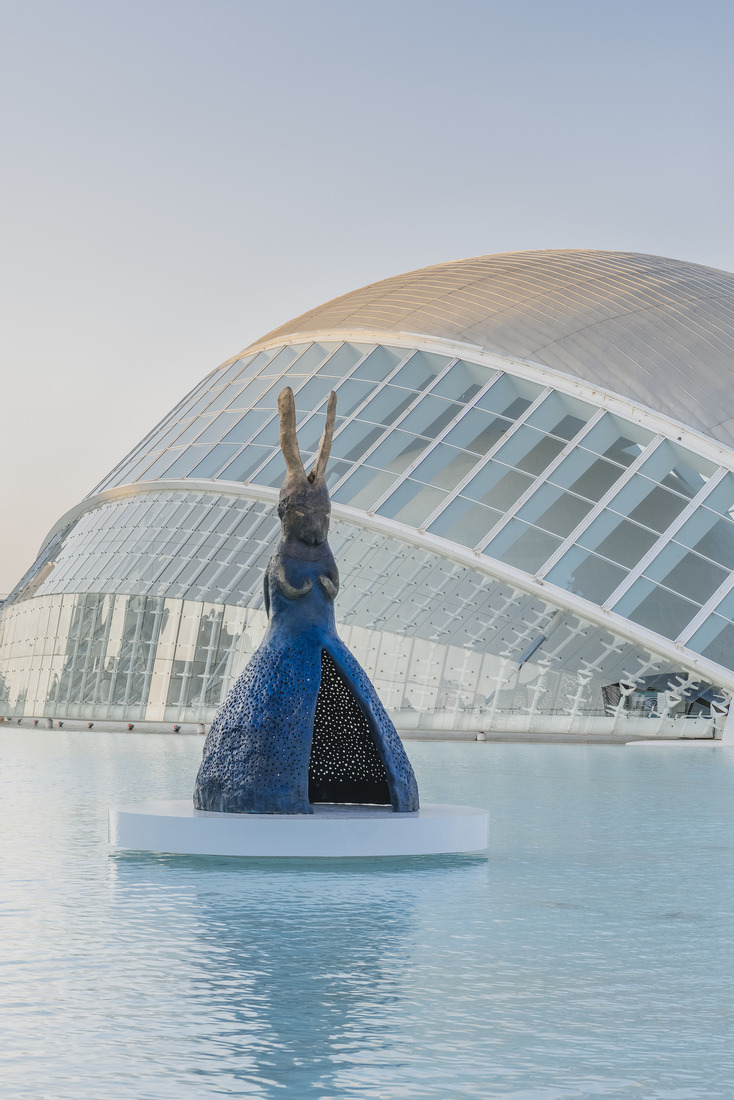
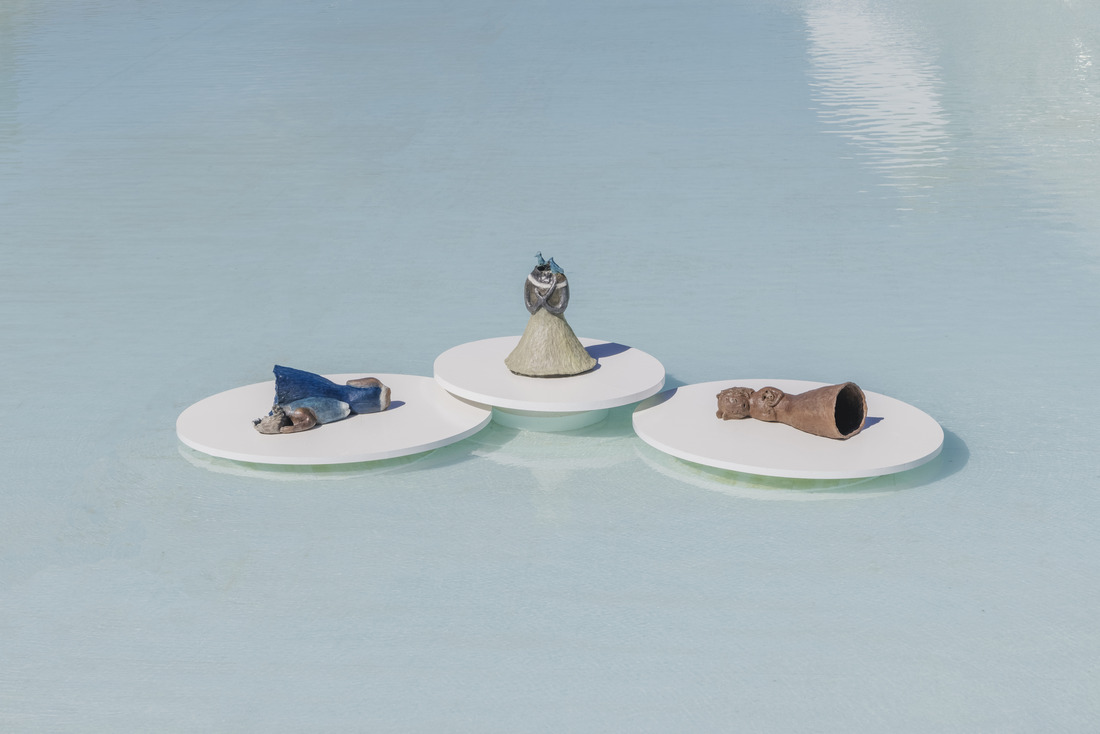
Your work often incorporates elements of symbolism. Could you elaborate on the symbolism in your art?
I don’t particularly aim to use symbols in my work due to the inherent subjectivity in their interpretation. However, during my studies in Spain, I found inspiration in Surrealism, which has influenced my artistic style. Rather than relying on traditional symbols, I prefer to convey ideas through visual connotations, allowing viewers to derive their interpretations.
Your work showcases a fusion of animals, humans, and plants. What attracts you to these subjects?
Humans are integral to the broader universe, intertwined with all living creatures and natural elements within the vast cosmic dance. I find great inspiration in exploring these themes within my personal yet universal framework.
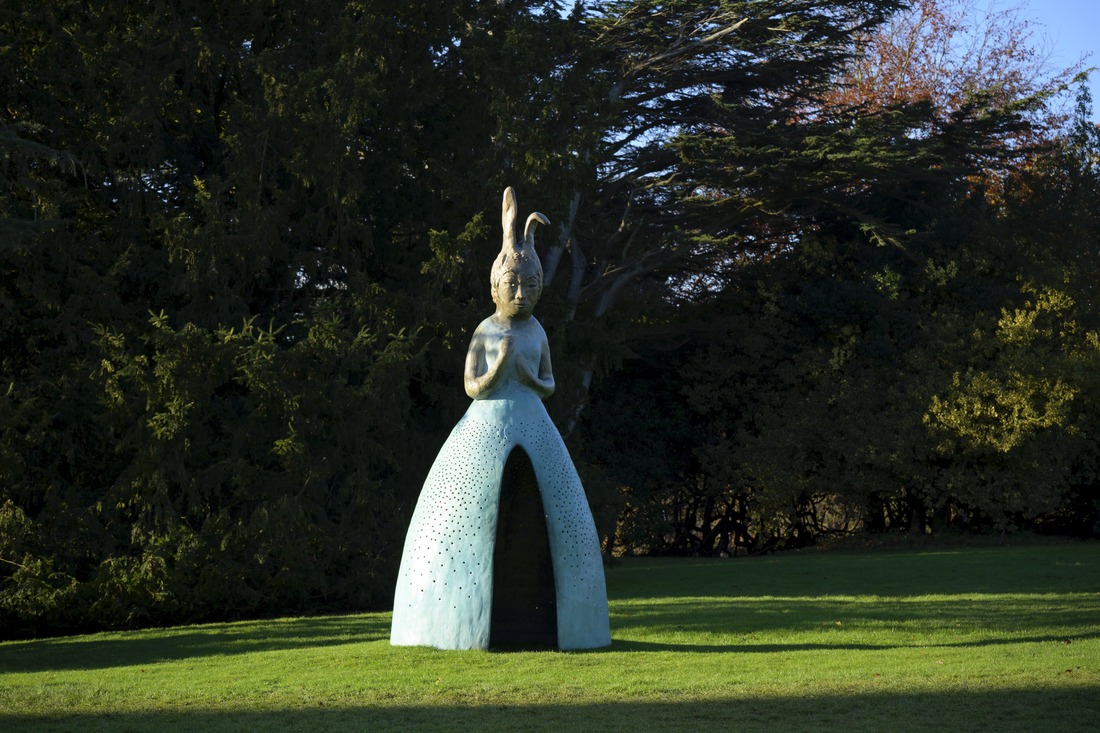
Can you discuss your transition from drawing to painting and sculpture?
Drawings serve as the foundational structure, embodying the core content and essence of my visualizations. They act as pivotal tools in evolving artistic processes. In painting, drawings are crucial in studying and exploring color, structure, and subjects. Similarly, in sculpture, I often commence the creative process with drawings, using them as an initial guide to establish the work’s form and scale.
What is the significance of your fusion of European and Japanese landscapes?
This fusion was never intentional. I prefer to let it happen naturally. In my landscapes, one can feel the influence of my origins. For example, the materials I use, such as fluid ink or tempera, contribute to this. This tactile and sensual materiality is significant to me.
Triptychs have been a significant format in your work. What draws you to this format, and how do you approach it?
Triptychs hold a special place in my artistic practice, not solely for their religious connotations but for their unique narrative potential. They allow me to tell a story in three interconnected parts, each flowing into the next to create a visual narrative. I favor an asymmetrical format, which encourages viewers to expand their imagination beyond the realm of the three panels, inviting further images and stories. While these triptychs were not initially intended to evoke religious content, the association with its iconographic and mythical dimensions could be contemporary and free of any religious connection.
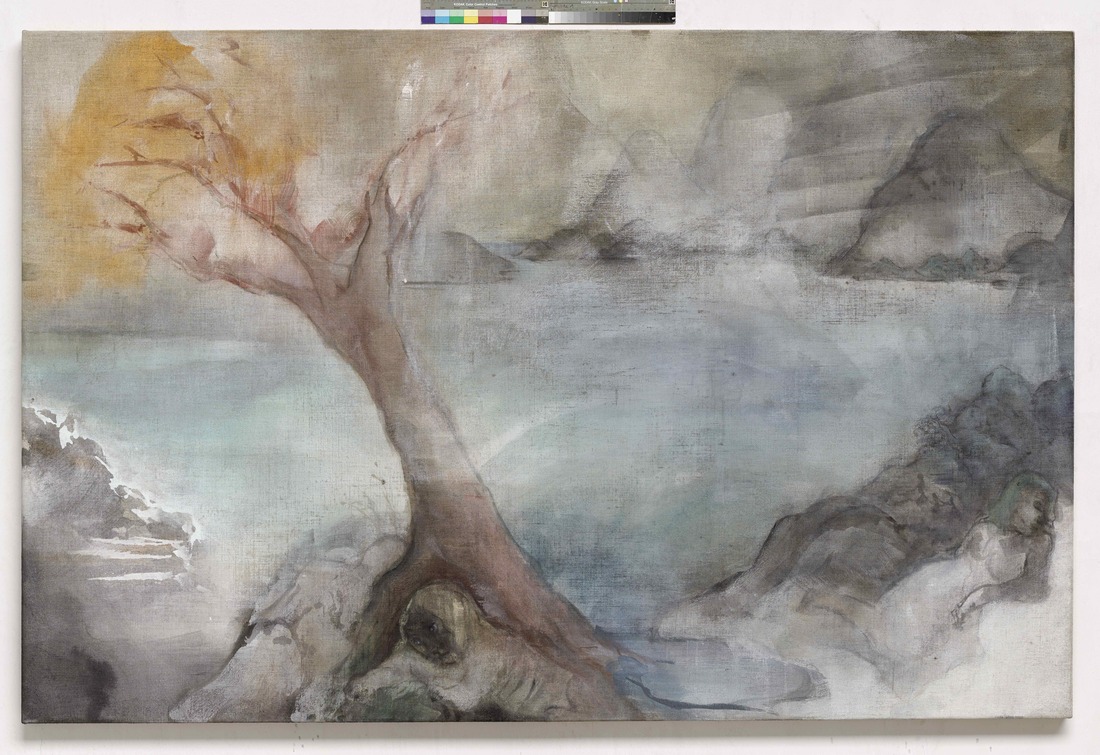
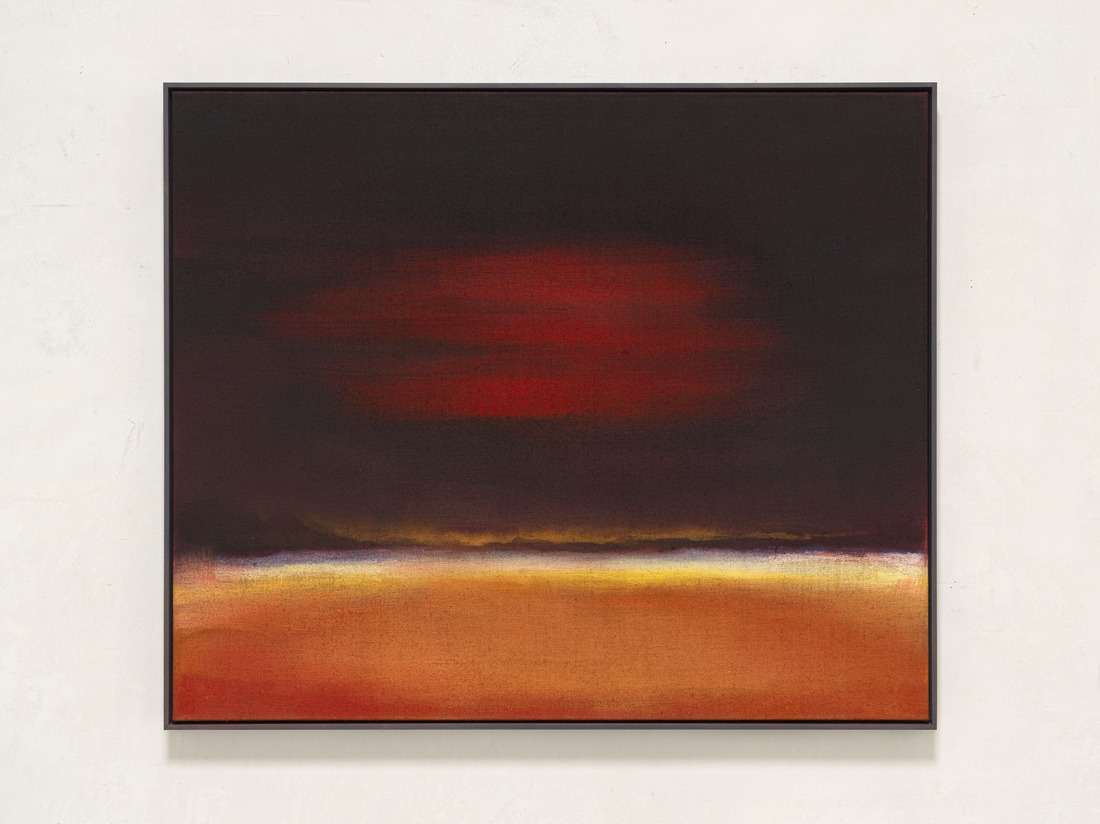
The motif of the young girl is a recurring theme in your art. Can you explain the significance of this motif?
The experience of girlhood is often overlooked and underexplored. It’s a transitional phase between childhood and womanhood, marked by uncertainty and vulnerability. I’m fascinated by delving into the nuances of this sensitivity.
You’ve mentioned subverting stereotypical depictions of girls. How do you achieve this in your work?
I don’t approach this topic as merely a motif in Western art history. It’s not just a theme; it holds existential significance, not only for me but also for humanity. I aim to breathe life into moments of anxiety and burgeoning sexuality. I strive to offer alternative perspectives and delve deeper into this aspect.
Your art examines tensions and conflicts between mothers and children. What themes are you exploring in these relationships?
I explore the complex nature of motherhood, viewing it not only as a reproductive function but also as a metaphor for creativity. I delve into the wonder of creating new life, alongside its inherent violence and fear. My investigation goes beyond mere love; it encompasses the complexities of rejection and a nuanced psychological profile. Motherhood, often idealized, rarely acknowledges this amalgam of emotions. I approach it from a more animalistic perspective, avoiding the idealization often present in Western art history’s iconography. Interestingly, motherhood stands as the antithesis of the patriarchal system.
The rabbit motif appears prominently in your work. What does the rabbit symbolize for you?
I want the rabbits to be free from their symbols and meanings.
You’ve been compared to a musician in your approach to art. How does your artistic process resemble a musical jam session?
My artistic process is similar to a musical jam session, particularly jazz. Much like musicians who improvise and respond to the flow of music at the moment, I embrace spontaneity and unpredictability. While I may have a basic structure or idea in mind, I allow myself to be guided by the energy of the creative process. Just as with a jam session, where the music evolves organically, my art develops as I engage with the materials and the inspiration of the moment. This approach fosters a sense of openness and exploration, resulting in works that are dynamic and alive with the essence of the present.
How did the Tohoku Earthquake impact your work, particularly the creation of the Usagi Kannon (Rabbit Madonna)?
The Tohoku Earthquake was an overwhelming tragedy that deeply affected me. Witnessing the destructive power of nature stirred within me a profound sense of compassion and the need to take action. The creation of the Usagi Kannon stemmed from a desire to manifest consolation and compassion in the face of such devastation. Even years later, as the world continues to grapple with climate problems and conflicts, this motif remains a symbol of presence and mission, reminding us of the importance of empathy and solidarity.
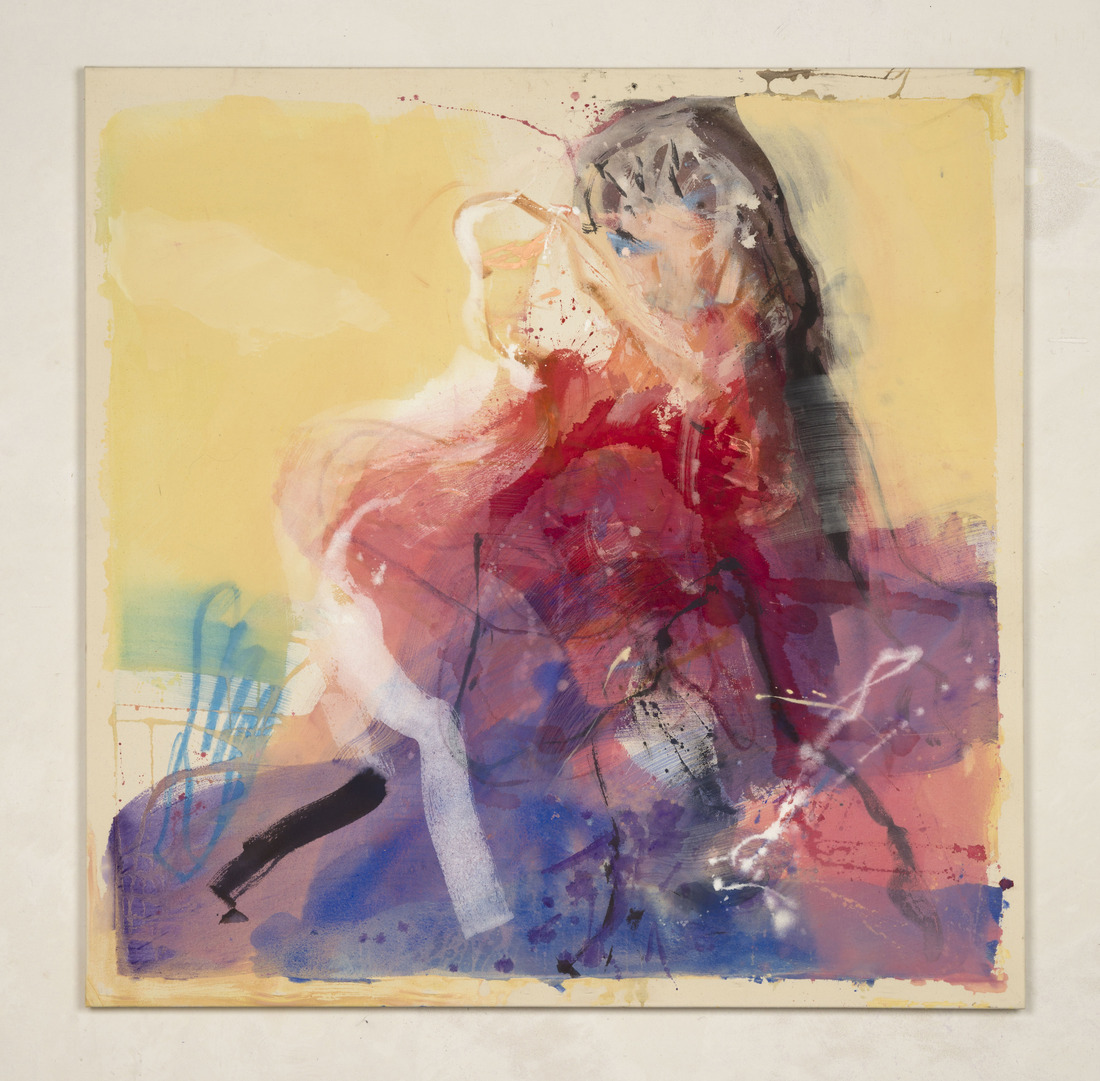
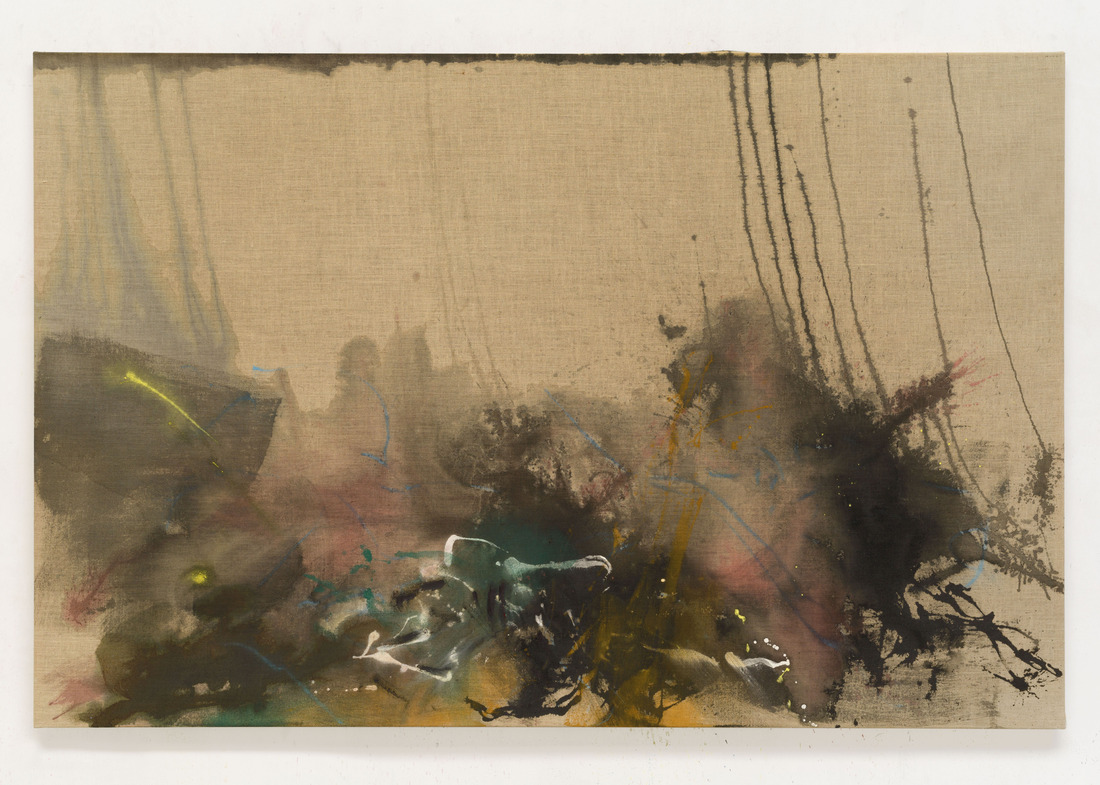
The Usagi Kannon sculpture is known to provide a sense of protection and healing. What message do you hope viewers take away from it?
The Usagi Kannon sculpture offers an immersive experience, inviting visitors into a tranquil and introspective space. As they enter, they step into a small cosmos where light and shadow intertwine, creating a serene atmosphere. I am intrigued by how each visitor perceives and experiences this unique environment, fostering their connection with the artwork.
Variations of the Usagi Kannon have been displayed in various locations. How do these variations enhance the message of your art?
The Usagi Kannon holds a special place in my work, serving as a hybrid spiritual figure in the world and acquiring an iconic status. Over the years, I’ve dedicated myself to exploring this theme, allowing it to evolve and resonate across different contexts and interpretations.
How do imperfections in your sculptures contribute to your artistic expression?
This is a philosophical matter. I believe that perfection is not the goal. In the artistic process, the primary artistic essence can fade if one pursues perfection to its end. Imperfections in my sculptural works serve to convey authenticity and humanity, adding depth and character to my artistic expression.
Your work is often associated with mysticism. Could you provide insight into the mystical aspects present in your art?
I don’t usually elaborate on mysticism in my work. For me, mysticism stems more from devotion and humility towards the unknown. I tend to delve into the inner world and distant memories rather than relying on what’s traditionally considered mystical elements.
What challenges have you faced as a globally recognized artist?
Navigating the art world on a global scale has required immense effort and patience. Embracing diverse cultures and disciplines has been essential. One notable challenge has been the long-standing Eurocentric bias, which has gradually evolved over the years.
My approach has been to balance global and local engagement. While collaborating with galleries, museums, and curators, maintaining my artistic independence has been paramount. Progressing through artistic endeavors incrementally has provided strong mental support, allowing me to persist in challenging and exploring.
However, there have been moments of doubt, particularly during times of uncertainty, when maintaining self-confidence proved challenging.
What are your thoughts on showcasing your art in prestigious institutions?
Being present with my artworks in museums and institutions is incredibly important, not only as a form of recognition but also for the direct dialogue it fosters with visitors and audiences. Unlike mass-produced items, my works are meant to transcend our lifetimes, hopefully leaving a lasting impact for generations to come.
In 2023, you had your first solo exhibition in Mexico. What was the personal significance of this exhibition?
Having my first solo exhibition in Mexico in 2023 was profoundly meaningful. It represented an exhilarating and inspiring experience for me as I collaborated closely with Mexican artisans in ceramic workshops and engaged in museum installations alongside young artists. This interaction allowed me to forge deep connections with the local community and immerse myself in their rich cultural heritage, ultimately enriching my artistic journey.
In your opinion, what role does art play in society, and what impact do you hope your art has on viewers?
Art holds the potential to reconnect humanity with spiritual dimensions and the rhythms of nature and the cosmos. It offers an opportunity to enrich our inner lives and foster deeper communication beyond societal boundaries.
All images courtesy of the artist.
Editor: Kristen Evangelista